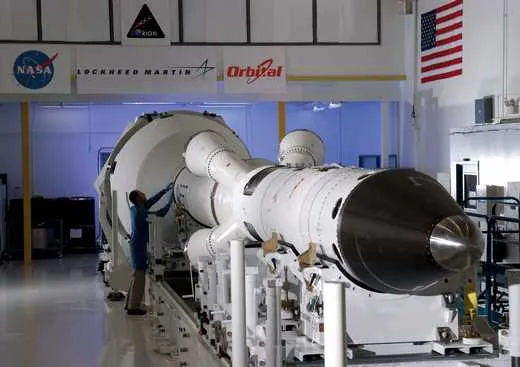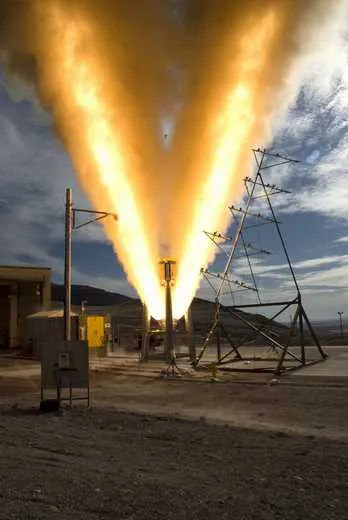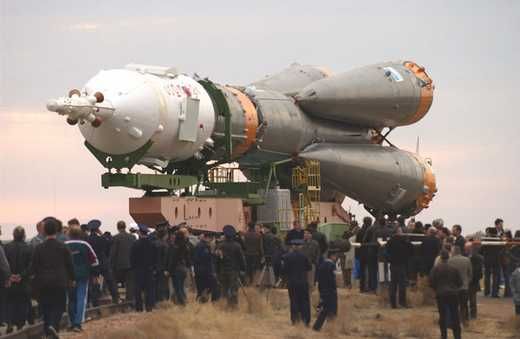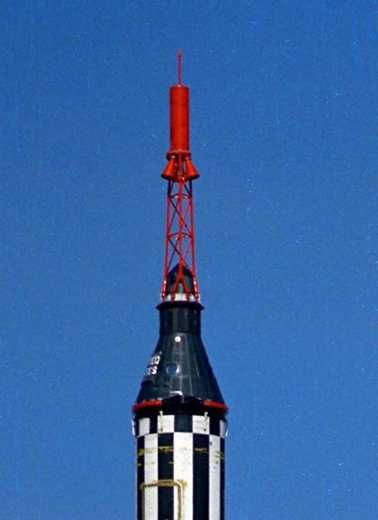Exit Strategy
NASA’s new launch abort system just passed a major test. But what booster and capsule will use it?
/https://tf-cmsv2-smithsonianmag-media.s3.amazonaws.com/filer/launch%20abort-flash.jpg)
NASA astronaut Norm Thagard rode the space shuttle to orbit four times before he was selected as the first American to launch on a Soyuz. On that day, March 14, 1995, strapped into his couch atop the rocket at the Baikonur Cosmodrome, he took heart in the thought that the Soyuz had a launch abort system. At the tip of the vehicle was a long, slim, powerful rocket that could yank the crew capsule away from the rest of the Soyuz if the booster failed. The shuttle had offered Thagard no such insurance.
“And if I doubted that [the abort system] worked,” says Thagard, 66, by phone from his Tallahassee, Florida, home, “all I had to do was turn to my left and look at Gennady Strekalov, my flight engineer. I was looking at a guy who had actually been in a launch pad abort and lived to tell the tale—and in fact, obviously, was still on flight status.”
Strekalov’s ill-fated mission, Soyuz T-10-1, launching at night on September 23, 1983, ended about a minute before liftoff when fuel began to spill around the base of the rocket, which became engulfed in flames. Two seconds before the rocket exploded and destroyed the pad, the ground control team activated the launch abort system. It remains the only instance that one has been used on the pad with a crew aboard. Strekalov and his commander Vladimir Titov were propelled a few thousand feet into the night sky, squashed into their couches at 14 to 17 Gs for a few seconds. The spent abort motor popped off, the parachutes opened, and the capsule floated to the ground a few miles away. “If it had been the shuttle,” says Thagard, “they would have been dead.” You can almost feel the heat in this Russian video.
“I felt safer on the Soyuz,” continues Thagard. “It’s kinda strange. You grow up thinking that the Russians don’t care as much about human life as the Americans, and when you get there you find out nothing could be farther from the truth. I think they’re sort of fatalistic about their own individual fate, but when it comes to concern for others, I think they outdo us in that regard.”
Now NASA is producing its first new launch abort system in a generation. Lockheed Martin and Orbital Sciences Corporation developed the 44-foot-long LAS for the space agency’s Orion capsule, and came up with a design similar to the escape systems carried atop the Mercury and Apollo rockets. (Gemini capsules used ejection seats.) This morning at the U.S. Army’s White Sands Missile Range in New Mexico, NASA conducted Pad Abort Test-1, the first fully-integrated test of the new system, which according to Orion flight test manager Don Reed, was a “monumental success.” See this NASA video made before the test, and footage of today's flight.
The new LAS is made up of three solid fuel motors. The main abort motor delivers half a million pounds of thrust—140,000 pounds more than the entire Mercury Atlas rocket that propelled John Glenn into orbit, and 350,000 more than the Saturn V LAS. The new abort system incorporates the latest advances in rapid-burn, solid rocket design, wrapped in a high-strength graphite-epoxy motor case. The attitude control motor, made by Alliant Techsystems, produces up to 7,000 pounds of thrust to steer the LAS and capsule, and marks the first use of a high-voltage lithium-ion battery in a solid-propellant system. Its variable high-thrust technology eliminates the heavy ballast, aerodynamic canards, and reliance on static aerodynamic stability of the Apollo era, and is more akin to modern missile steering systems.
The jettison motor, developed by Aerojet, fires to separate the crew capsule from the LAS so that the capsule’s parachutes can deploy. It more closely resembles the Apollo version, yet generates more power to handle the greater mass of the new LAS. The jettison motor is designed to be extremely reliable, as it will separate the LAS from the capsule after every normal launch (when it's no longer needed), as well as being used in emergencies. In a pad abort, the capsule is expected to be on the ground a minute and a half after the abort begins.
The problem now is finding a crew capsule for the LAS to rescue. In NASA’s budget announced in early February, Orion was cancelled along with the rest of the Constellation program to send astronauts to the moon. In mid-April, in his first address about his new plan for NASA, President Obama amended that decision slightly, saying that Orion may still serve as a lifeboat docked to the International Space Station. In that case it would launch without a crew. In either scenario—used as a lifeboat or totally cancelled—Orion would not need an abort system.
The uncertainty over Orion’s fate has the abort system's designers thinking about how it might work with other commercially developed crew vehicles down the road. Orbital Sciences chairman David Thompson said last February that he was open to the possibility. Mark Geyer, manager of NASA’s Orion project office, said after this morning’s test that the new design is “very much applicable to any other [launch] system.”
But because the LAS has been designed all along to work with Orion’s weight and aerodynamics, it would have to be redesigned fairly extensively, according to Barron Beneski, an Orbital Sciences spokesman. It’s not a stand-alone piece of technology that can be simply plugged into another capsule or on another booster. “Speaking for Orbital only,” he says, “when we take a look at developing such a system, we need to look at all alternatives, beginning with the booster. We’ve looked at Atlas V, and we’ve looked at our own Taurus II [rocket]. And we’ve had some preliminary discussions with ATK on developing something—it doesn’t have any name to it—but something like an Ares I Light, taking advantage of some of the work that’s already been done there. So we have a range of options. We haven’t made any decision.”
Space Exploration Technologies, or SpaceX, which plans to debut its own Falcon 9 rocket later this month, has yet to develop an abort system. Under NASA’s Commercial Orbital Transportation Services program, or COTS, Orbital Sciences and SpaceX have been receiving NASA money to develop ways to get cargo into low Earth orbit and to the International Space Station, followed later by astronauts. Orbital Sciences is already developing the Taurus II rocket and the Cygnus freighter, which conceivably could be human-rated at a later date. Elon Musk, the founder of SpaceX, has said that his company all along has designed the Falcon 9 to be human-rated. He says it would take about three years from the date of a contract signing to develop human-rating for the rocket, much of that work on an LAS. It’s possible that timeframe could be compressed if the Orion LAS could be tailored to work with Dragon, the SpaceX crew capsule.
But for now, the rocket that seems least likely to use the new abort system is the one it was designed for. Just as NASA’s Ares 1 was about to reach the launch pad, the project appears to be on permanent hold—one of the more dramatic aborts in the annals of space exploration.




